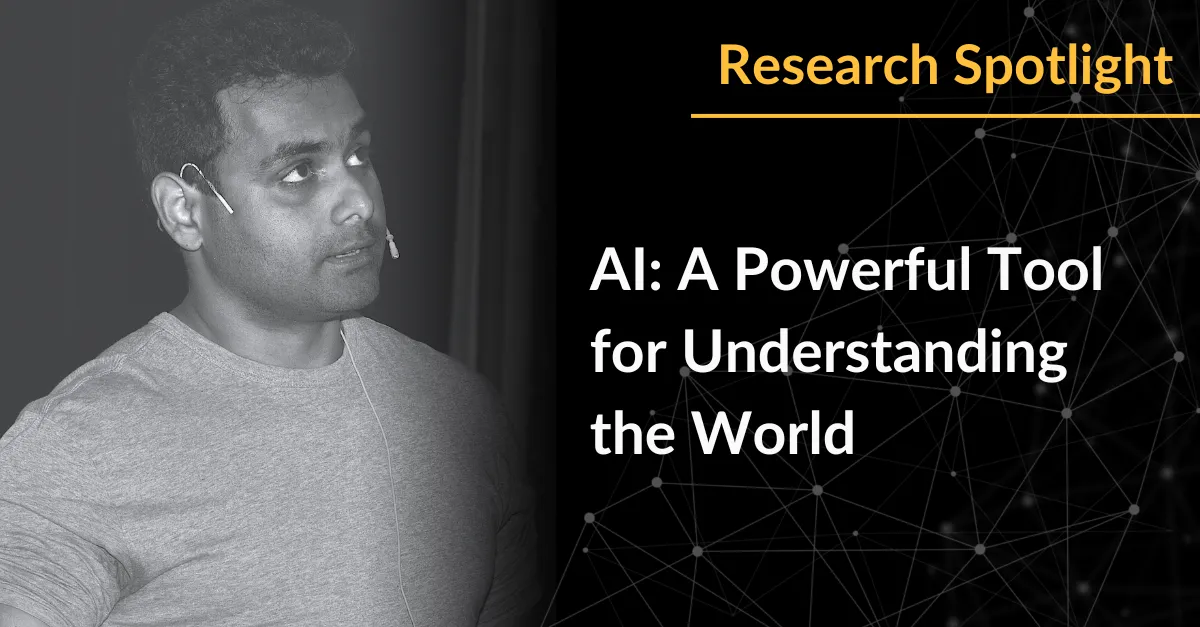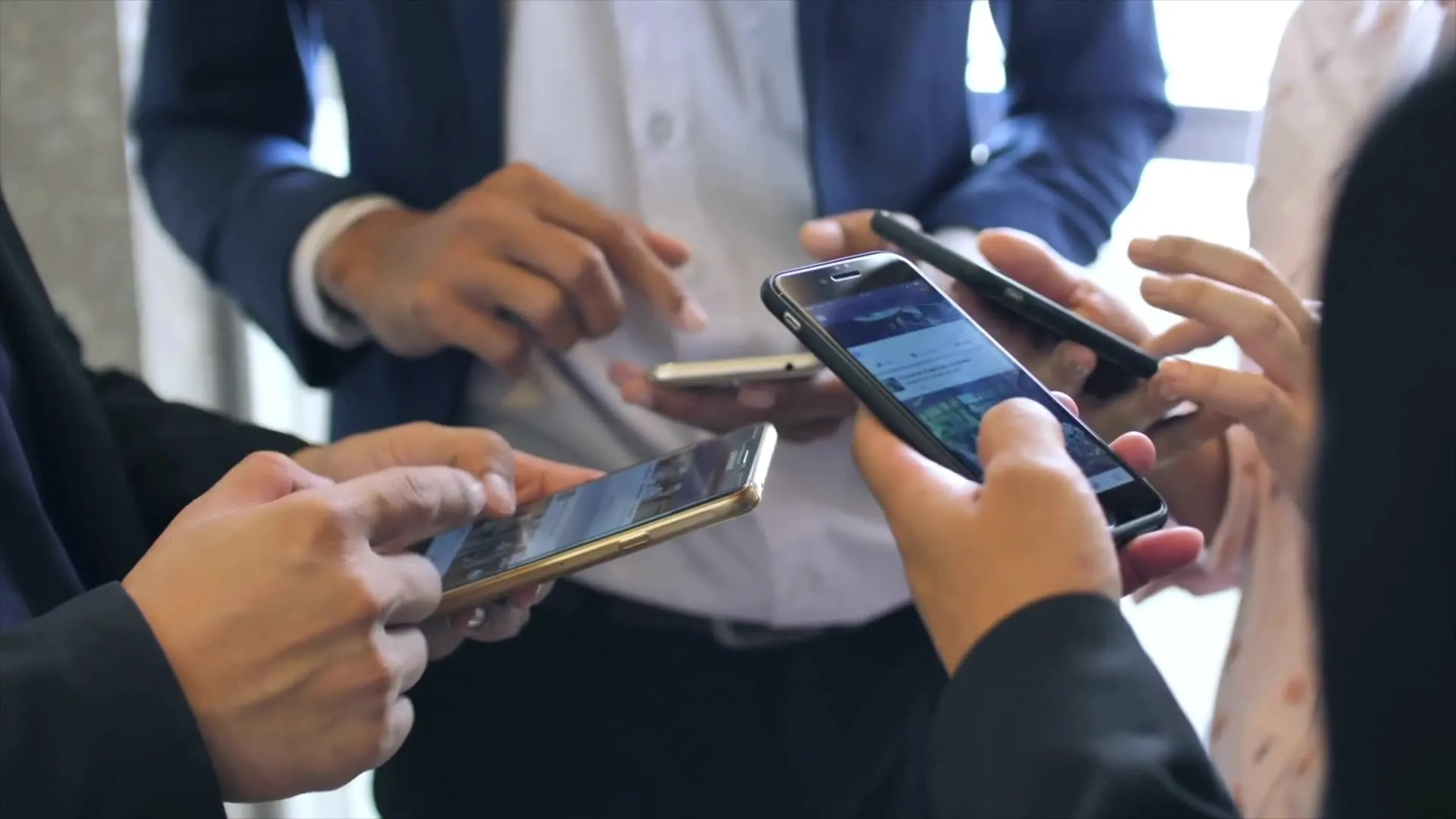AI: A Powerful Tool for Understanding the World

At a time when AI brings about both exhilaration and fear, Ayan Paul believes it can serve as a powerful tool for helping us understand the world around us. Paul, a serial founder and research scientist on the AI + Life Sciences team at the Institute for Experiential AI, is using AI to help interpret the messy streams of big data we collect as well as the complex models we use to make predictions.
At the heart of Paul’s approach is the use of AI to find patterns. Those patterns shed light on the nature of human health and disease, the impact of public health policies, and the inner workings of black box models.
“What really excites me about the application of AI in health care and the life sciences is that these fields rely on a lot of data from very different experiments and observations, and there’s no way anyone can crunch that data without AI,” Paul says. “When you don't know the details of a system, AI must be the tool of choice — and we really don’t know well how the human body works or the laws governing social organization. We have very limited knowledge about the building blocks of life. All we can do is collect as much data as possible. That is why I think AI can be so impactful.”
Paul’s research has led to insights at scales ranging from microscopic RNA molecules to the spread of infectious disease across the globe. He hopes it will lead to transformative new paths for disease prediction, diagnosis, and treatment.
"When someone has a disease, everything internal to them changes — like what proteins are formed, the relative abundance of proteins — and these changes leave a signature," Paul explains. "You can use that signature to detect disease early. By the time you diagnose cancer in more traditional ways through symptoms and tests, the disease may have progressed beyond the point of treatment. But what if we could diagnose cancer right at its root and then intervene? That would be much more effective."
From Particles to People
Some of Paul's most-cited research is in the world of particle physics. Paul earned a doctorate in the field in 2012, and his theoretical predictions contributed to a major discovery at CERN, the largest particle physics laboratory in the world.
But the pandemic marked a turning point in Paul's career. As COVID-19 was spreading in 2020, his interests shifted to epidemiology. People were increasingly advocating for the use of automated contact tracing, so Paul began evaluating the effectiveness of the most popular approaches.
"When I looked at the dynamics of automated contact tracing, it looked very much like two particles colliding, and that's something I'm really good at understanding," Paul says.
His research ultimately showed, as early as April 2020, that a very large fraction of the population (60 to 80 percent) would need to be enrolled in automated contact tracing for it to be effective, and hence it would never work as not enough people would enroll. He believes large investments into such measures by governments were eventually counterproductive.
“Governments of course went ahead with it despite our warnings, and none of them succeeded,” Paul says. “It’s a big deal because in a crisis like a pandemic, resources are limited.”
Like other researchers in the Institute’s AI + Life Sciences focus area, Paul also built public health solutions during the pandemic. An app he developed, CoVis, helped individuals predict their risk of contracting a disease by combining information like epidemiological data, disease characteristics, movement patterns, and more. At its peak during the pandemic, CoVis was used by more than 25,000 people across the U.S., Germany, Belgium, Austria, Italy, and the UK.
On Data and Disparities
Paul's work on disease risk ultimately led him to the Institute for Experiential AI, where he is still building models for predicting disease and understanding human health. One of those projects involves analyzing a class of algorithms used to predict infectious diseases and their consequences known as agent-based models.
“These models simulate every person in a society,” Paul explains. “If there are 330 million people in the United States, it will have an agent for each of them with some representative characteristics, almost like a simulated country. You know how many people go to school, how many people work in certain professions, their mobility patterns, and you encode that in these models and see what happens if, say, disease ‘X’ comes into the population."
Agent-based models are as complex as they sound, and Paul is using AI to gain a more granular understanding of how they work.
"Where does AI come in? These models are so bulky and contain so many parameters that it's very important to understand which parameters are most important,” Paul says. “If you want to create a mitigation strategy, you really need to know what is driving the disease spread.”
One of the factors Paul studied in agent-based models is how age affects the spread of COVID. He was surprised to find that COVID did not spread faster in counties with a higher proportion of senior citizens, in part because older people travel less and are more cautious about infection. That has all sorts of implications for government policies, like whether or not to lockdown a nursing home and isolate its residents.
“That really matters, because if you isolate senior citizens, the mortality rate actually goes up,” Paul says. “AI really helps you understand what mitigation strategies you should take.”
Paul is also improving AI models for epidemiology by adding health care data like comorbidities and mental health conditions.
"That surprisingly hasn't been done,” Paul says. “A big reason for doing that is disparities are really highlighted in health care. If someone has a comorbidity and they are in the poorer section of society, the chance of them getting infected with a disease is much, much higher than a similar person in the more affluent part of the society."
Applying AI for Impact
Disparities are something Paul thinks about a lot. He also founded KarmaV, a startup offering a tool for companies to build fairness and equity into their workforce using intelligent algorithms. The work aligns with the Responsible AI focus area at the Institute for Experiential AI, which helps organizations adopt and develop AI systems responsibly through training, independent ethics advisory boards, customized roadmaps, and more.
Whether Paul is finding the next question to answer with research, starting a company, or exploring new hospital collaborations, he uses impact as a guiding light.
“If any kind of science is going to make an impact in the next 50 years, it is going to be life sciences and health care,” Paul says. “Math and theoretical physics are fun to know, and it's super exciting to understand what happens in one corner of the universe. But their applicability lies maybe 100 years from now. These things in the AI + LS focus area can actually show results in my lifetime. They affect human lives and can one day hopefully save human lives.”
The Institute for Experiential AI is committed to applying the latest AI techniques to solve real-world problems for partner organizations. Reach out to learn how we can help your organization harness the full potential of AI, or learn more about the Institute’s AI + Life Sciences team.




